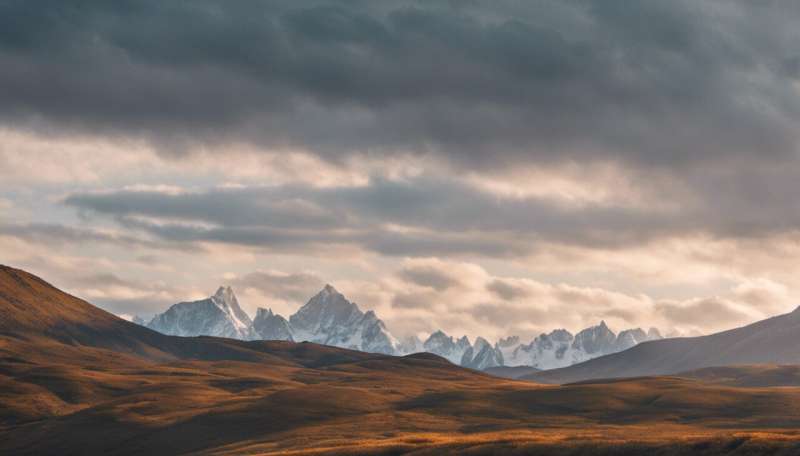This article has been reviewed according to Science X's editorial process and policies. Editors have highlighted the following attributes while ensuring the content's credibility:
fact-checked
trusted source
written by researcher(s)
proofread
Climate change is set to make our holidays look very different—here's how

Holidays are making a comeback after several years of disruption caused by the COVID pandemic. Nearly 4 billion passengers boarded international flights in 2022, up from fewer than 2 billion in 2020. Recent research suggests that people are likely to continue traveling more in 2023 and beyond.
But this resurgence in travel is concerning. The tourism sector alone is responsible for an estimated 8%–10% of global greenhouse gas emissions. And conditions at traditional holiday destinations in high summer are becoming increasingly unpleasant if not downright hazardous.
During the past year, numerous climate records have been broken as heat waves and wildfires ravaged large parts of Europe, Asia and North America. In July, both Sardinia and Sicily experienced temperatures in excess of 46°C, nearly breaking European records.
Most of what we do while on holiday, particularly on holidays abroad, releases greenhouse gases into the atmosphere and ultimately has an impact on the climate. But the way most of us get there—by flying—is potentially most damaging. UK data suggests that a single passenger on a short-haul flight, for instance, is responsible for releasing the equivalent of approximately 154g of CO2 for every kilometer traveled.
As the effects of climate change become increasingly severe, there's genuine concern that traditional destinations will become too hot in summer to remain appealing to visitors. This raises the question: how will tourism adapt?
Changing destinations
Researchers have been trying to predict the future of tourism for quite some time. One idea is that tourism will undergo a "poleward shift" as global warming causes temperatures to rise not only in traditionally hot regions, but also in locations further to the north and south.
A modeling study from 2007 predicted that, by 2050, hotter weather would make popular tourist hotspots like the Mediterranean less appealing in the summer. At the same time, northern destinations such as Scandinavia and the UK would experience longer holiday seasons.
Approximately half of global tourism is concentrated in coastal areas. So another concern is the potential loss of beaches due to rising sea levels. In the Caribbean, an estimated 29% of resort properties would be partially or fully inundated by one meter of sea-level rise—though many of these resorts would have lost a significant amount of their beach area before this.
Some other beach destinations are potentially even more vulnerable. Sardinia was hit by disruptive storms in 2022. Research suggests that the beaches there may struggle to accommodate tourists in the near future due to a greater risk of flooding and storms.
The impact of climate change on tourism will extend beyond just coastal areas. Many popular city break destinations, including Porto in Portugal, are expecting to endure more severe heat. Tourism in mountainous areas will be affected, too, as accelerated snow melt leads to shorter ski seasons.

The practicalities of tourism shifting
Changing conditions will affect where humans can safely travel to. But travel patterns take time to evolve. In the meantime, established destinations will need to change to withstand challenges such as extreme heat, rising sea levels and other climatic conditions.
Existing tourist destinations in areas of the world that are vulnerable to the effects of climate change, such as the Nile Delta in Egypt, are already considering ways to adapt. These include building seawalls and natural dunes to protect tourist areas from coastal flooding. Changing construction materials and reconfiguring urban spaces to improve ventilation have also been proposed as ways to reduce reliance on expensive and energy-intensive air-conditioning.
New destinations that begin to emerge in more temperate regions will require substantial infrastructure development to support the influx of visitors. This includes transport systems, accommodation, dining options and attractions. The process of establishing tourist destinations typically takes time and requires careful thought.
Barcelona, for example, has experienced a rapid surge in tourism demand since the 1992 Olympics. This has resulted in a tenfold increase in visitors over the past three decades.
Such rapid tourism development can put a strain on local people and the environment. Although Barcelona already had a transport system and some infrastructure to accommodate visitors, the rapid growth in tourism has led to strong opposition from local residents.
What will happen next year?
The current thinking among tourism academics is that those responsible for managing tourist destinations should work towards reducing carbon emissions by focusing on the domestic market.
But, as recent summers have shown, international tourism does not look set to slow down yet. Even amid crises such as the fires burning through Rhodes in summer 2023, tourists continued to arrive.
Rather than choose different destinations, the most likely scenario—at least in the short-term—is that tourists themselves will adapt to the effects of climate change. During Europe's summer 2023 heat wave, there were reports that people were staying in their hotel rooms in the hottest part of the day and taking sightseeing trips in the evening.
Nevertheless, there are some signs that travelers may be starting to worry about more extreme weather conditions and adapt their travel plans accordingly. A survey conducted in May 2023 showed that 69% of Europeans planned to travel between June and November—a fall of 4% compared to 2022.
The heat wave of summer 2023 might mean that tourists start looking for cooler destinations as early as the coming year.
The evolving landscape of global tourism in the face of climate change is complex. What is clear, though, is that if Europe continues to experience extreme weather conditions like the summer of 2023, many people will think twice about booking their place in the sun.
Provided by The Conversation
This article is republished from The Conversation under a Creative Commons license. Read the original article.![]()





















